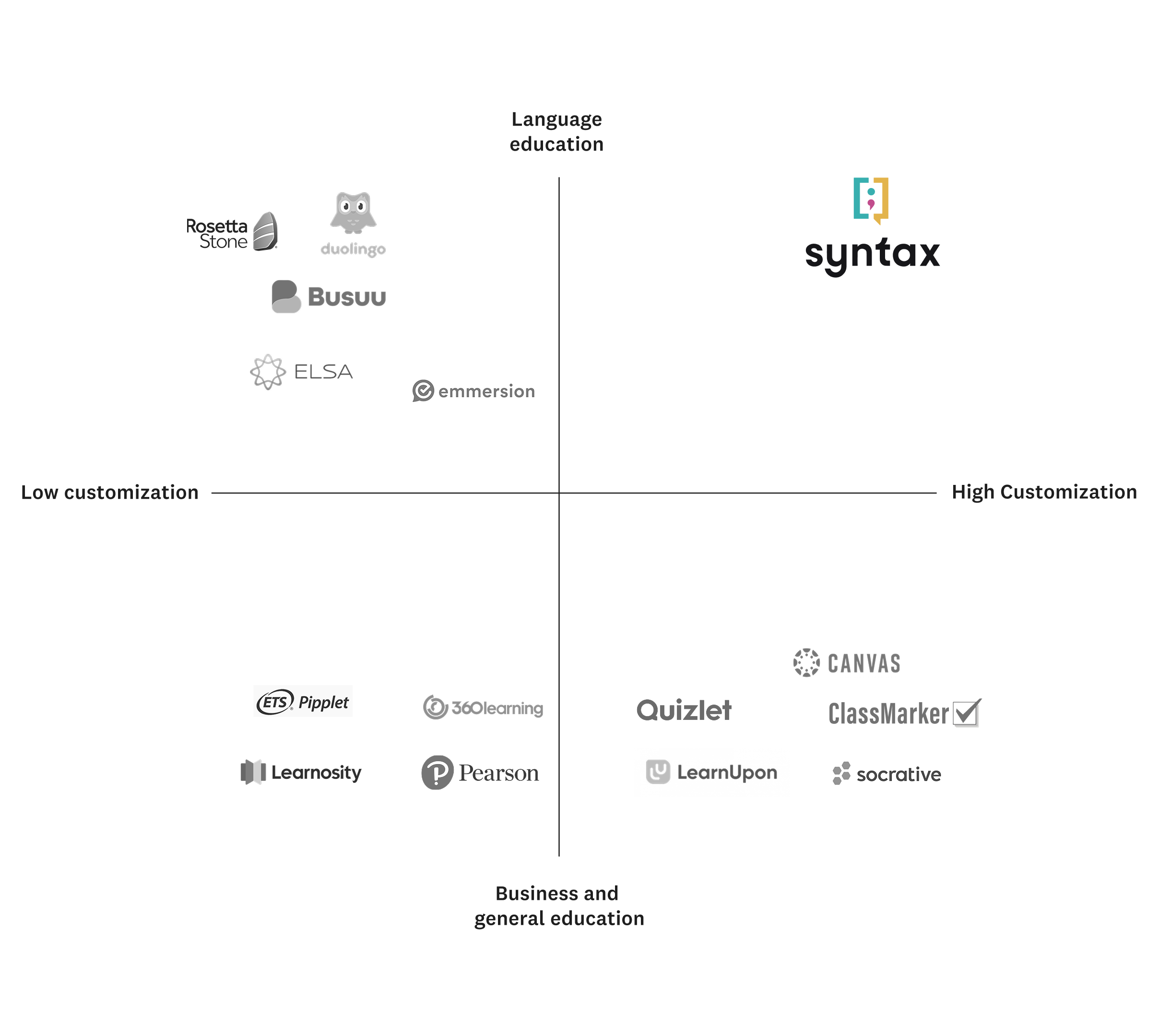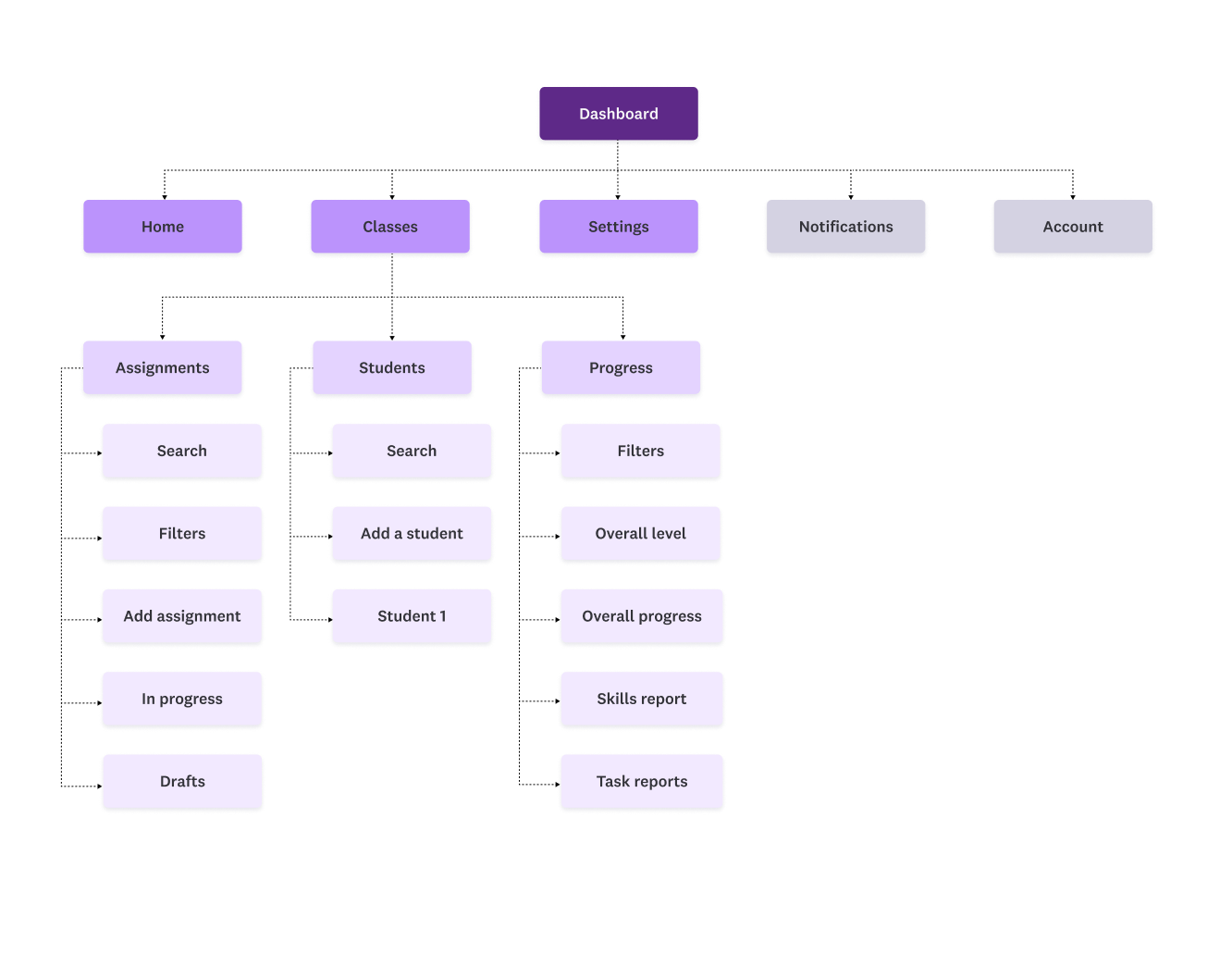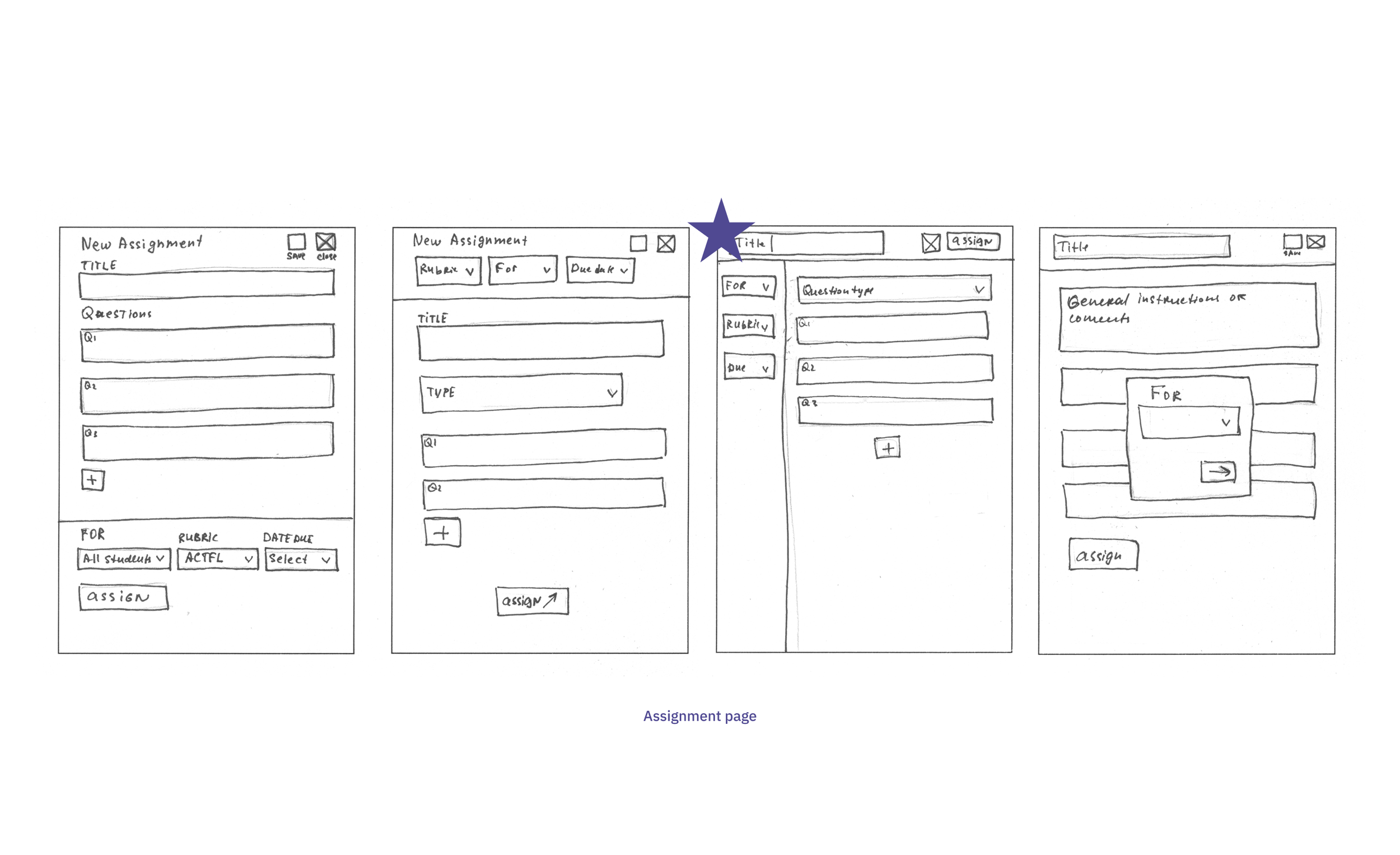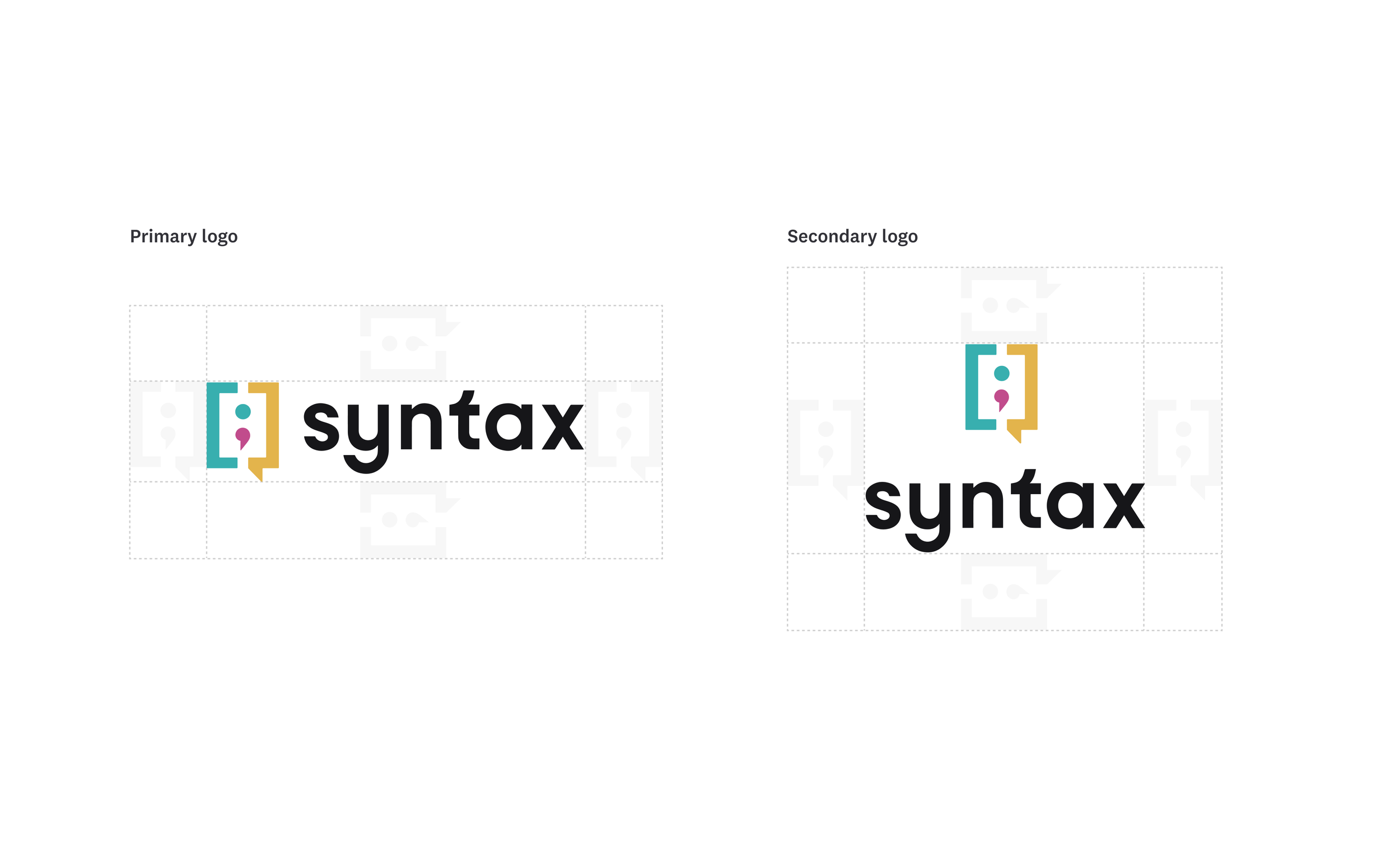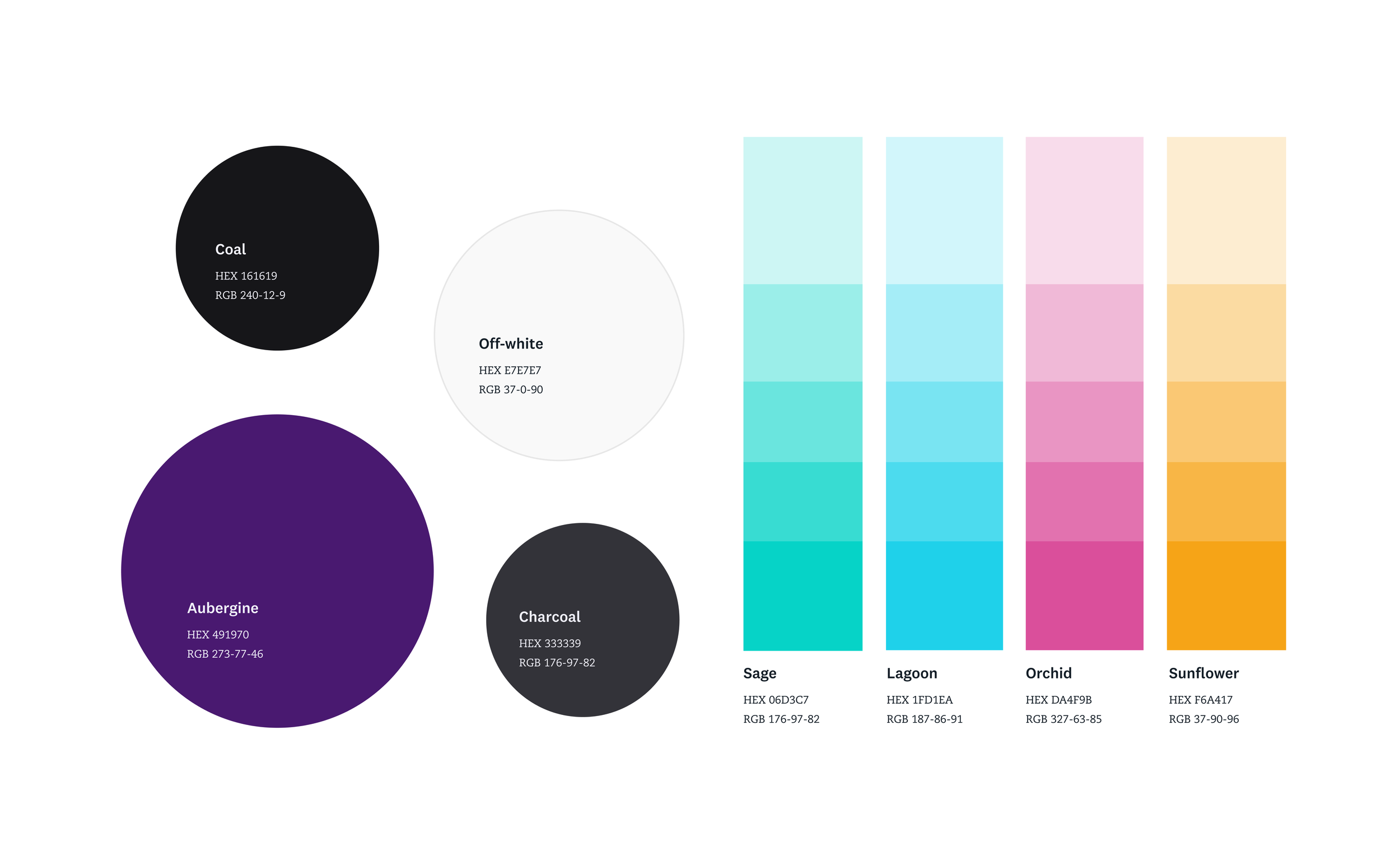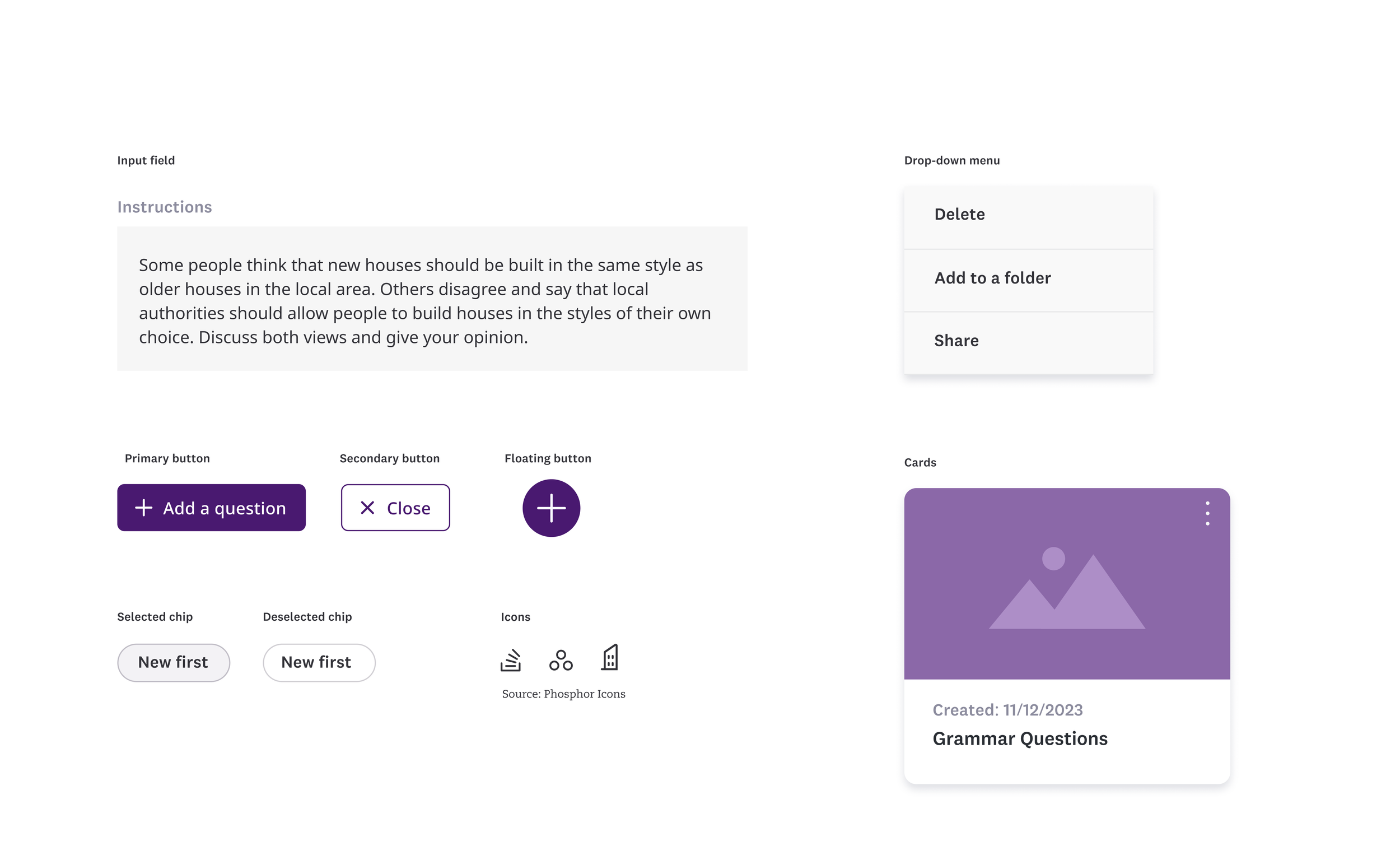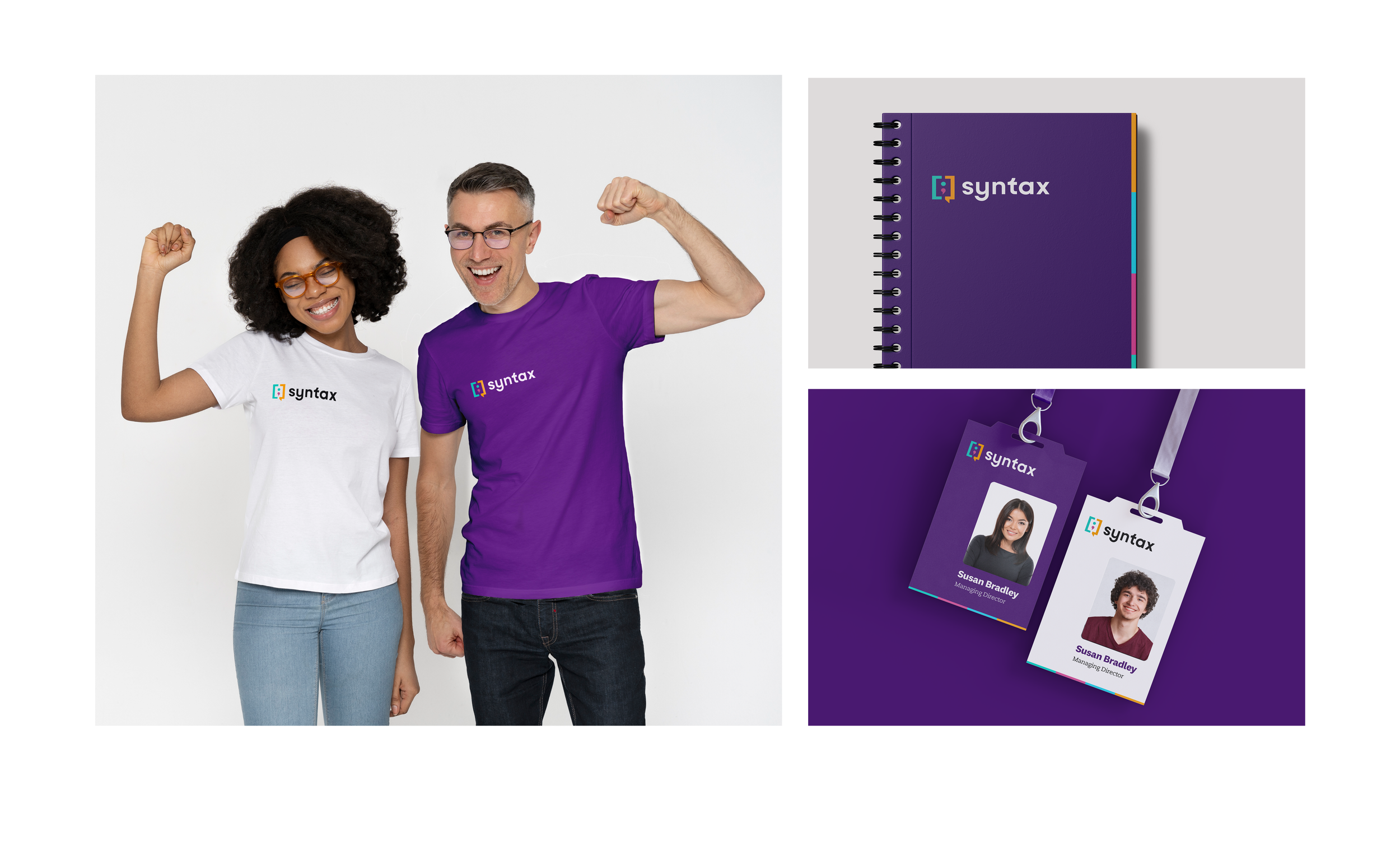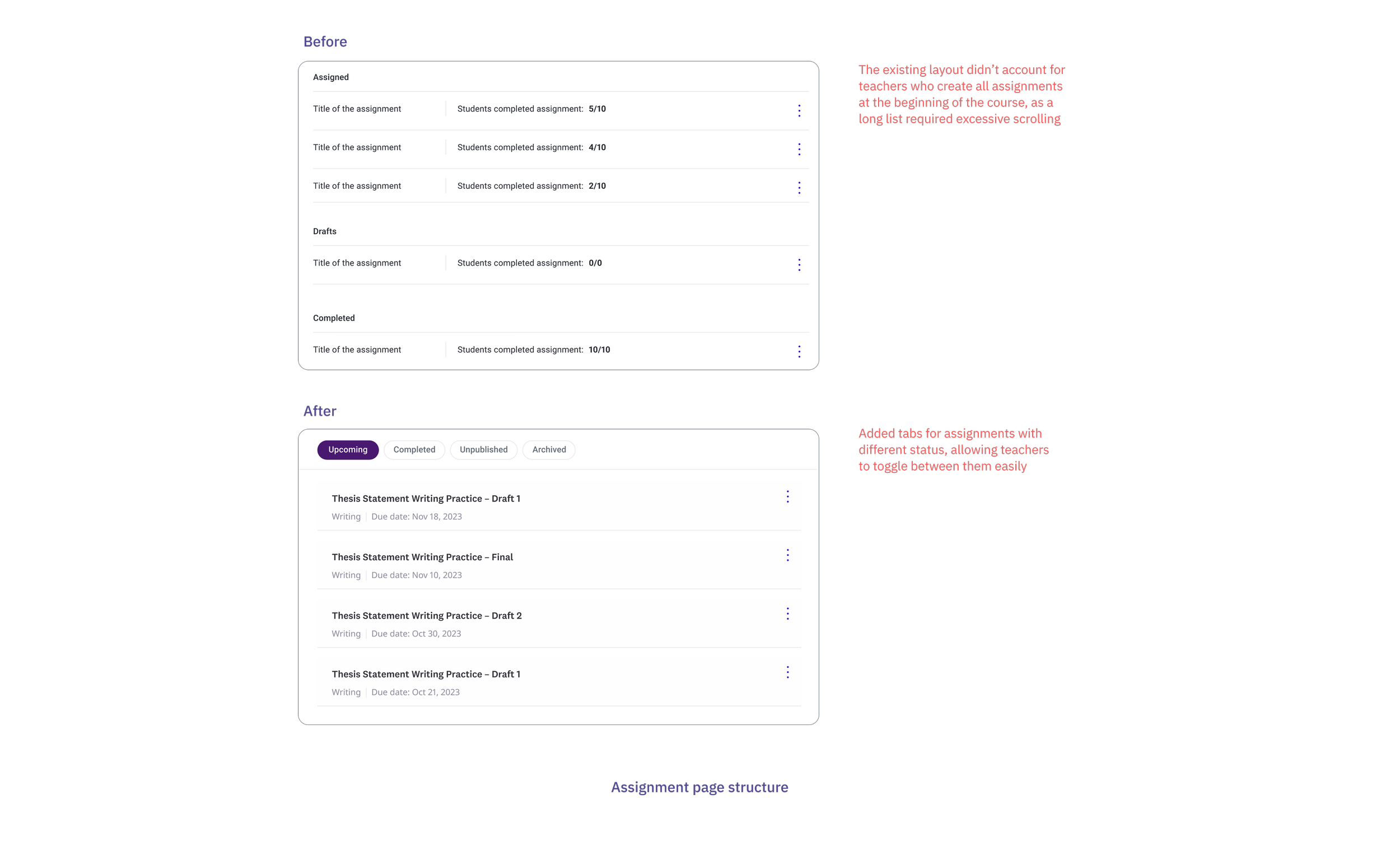Syntax—Automating Assignments for Language Educators
A platform powered by AI to support language educators in generating and grading assignments, delivering personalized feedback, and tracking student progress—enabling more efficient, tailored teaching. Part of BYU Sandbox program.
TEAM
Product Manager / Co-founder: Kyle Kohn
Developer: Eden Paupulaire
MY ROLE
UX/UI Design, Research, Brand Identity, Brand Strategy
DURATION
5 weeks
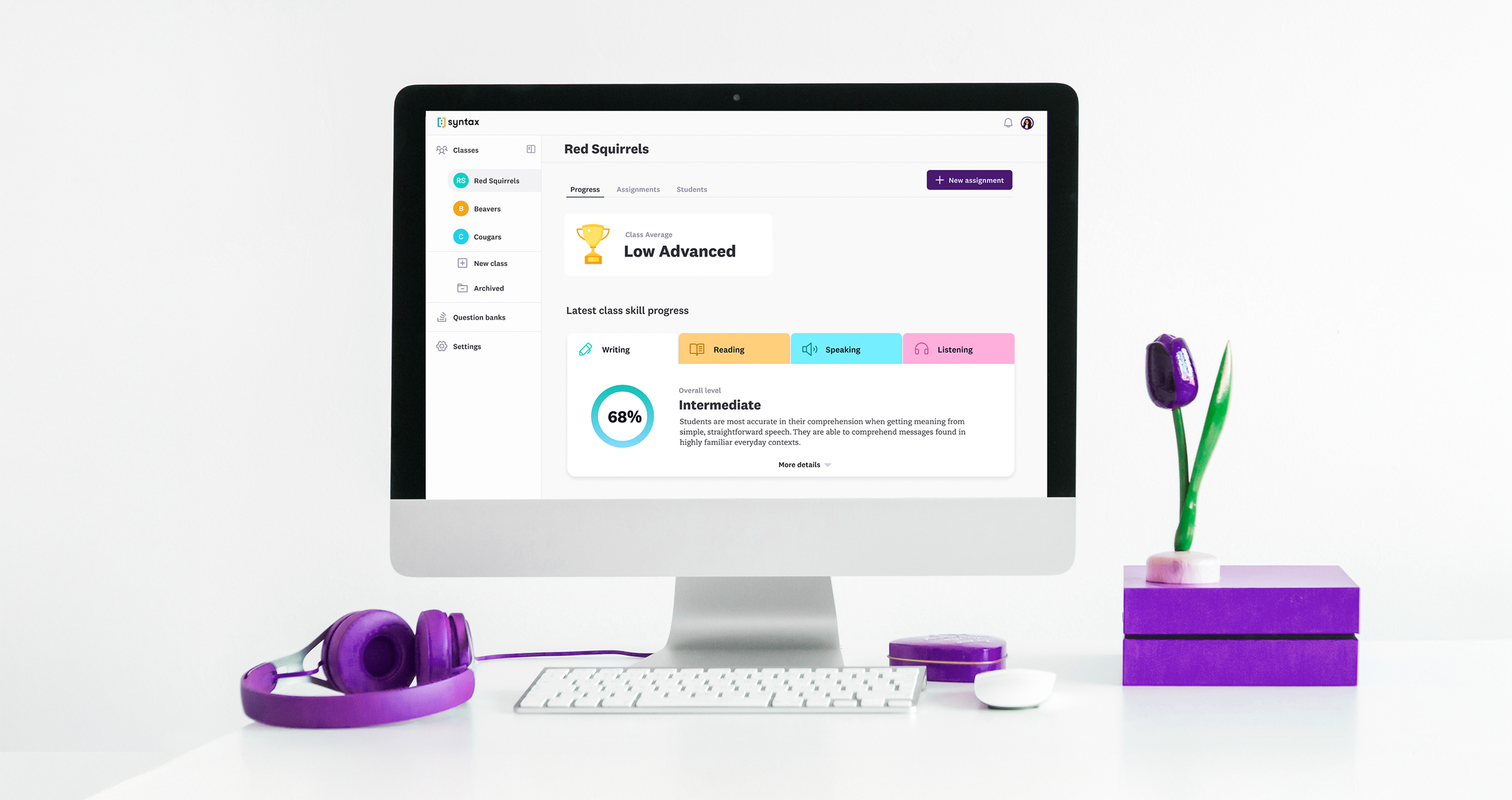
THE CHALLENGE
Teachers spend significant time creating and grading assignments, making it difficult to track student progress effectively and provide individualized feedback.
WHAT I DID: COLLABORATION WITH TEACHERS
Interviewed 8 language teachers to uncover key gaps in the teaching process. Then collaborated with 3 English teachers to design a solution that improves progress tracking and frees up time for more individualized student support. Collaborated with an engineer to test assignment generation flow.
RESULT: SMARTER TEACHING WITH AI
Designed a platform that uses AI to help language educators create and grade assignments, provide individualized feedback, and track progress efficiently, allowing teachers to tailor lessons to their needs.
Teachers want to spend more time supporting individual student needs in class
01. Time Lost in Managing Assignments
Teachers spend a substantial amount of time on creating and grading assignments to track their students’ progress
02. Lack of Personalized Feedback
Teachers don’t always have an opportunity to have a 1-on-1 with each student to provide feedback on their performance
03. Existing AI Tools are Useful but Flawed
While teachers use ChatGPT for creating assignments and grading, this method lacks accuracy and consistency
Market lacks language-focused tools with automated grading and feedback
AUTOMATING ROUTINE TASKS FOR LANGUAGE EDUCATORS
Most other tools in the market are built for general or professional training and heavily rely on manual input. Syntax stands out by giving language teachers smart AI tools to create, grade, and track assignments automatically. It provides teacher-like feedback that helps students learn and improve with less direct teacher involvement.
Elliot Li, a 34-year-old ESL teacher at a language learning center in NYC with 10 years of experience.
“I love teaching and making a difference in my students' lives. Finding ways to be more effective and efficient with my time is crucial.”
Challenges
Struggles to address the varying proficiency levels and learning styles in his classes.
Balances a heavy workload, often leading to long hours spent on grading and preparation.
Faces constraints in resources, making it difficult to implement certain teaching aids or methods.
Tech Elliot Uses in Class
Canvas, PowerPoint, Duolingo, Quizlet.
Open to adopting new technologies
Goals and Motivations
Provide engaging and personalized learning experiences for his students.
Find tools to reduce time spent on grading and assessments, providing more time for individual student attention.
Seek opportunities to integrate innovative tools into the curriculum.
DEFINING APP STRUCTURE
Looking at similar products and focusing on the core feature help define the app architecture.
IDEATING ON CORE SCREENS
To begin ideation, I focused on one common assignment type and explored layouts for both assignment creation and student progress tracking.
TESTING PROMPTS WITH CHAT GPT
During ideation, we experimented with prompt design in ChatGPT to ensure that both structured and open-ended inputs produced meaningful, varied responses. We tested several models to evaluate accuracy and consistency, ultimately selecting the one that aligned best with the educational context and user needs.
Key changes after prompt iteration and users’ feedback
Syntax visual identity conveys empowerment and approachability
The name Syntax reflects language structure, aligning with the platform’s role in analyzing responses and enhancing feedback. The logomark combines square brackets as a speech bubble and a semicolon, symbolizing language structure and communication.
Testing designs revealed new insights
Insights
Teachers often reuse the questions they created.
Several teachers may have similar classes or have to substitute each other.
Teachers want to be able to create all assignments at the beginning of the course or add assignments as they go based on the need.
Possible Solutions
Create a question bank where teachers can make their sets of questions and assignments that they can use again later and easily share with other teachers.
Design the Assignments page to support both single and bulk creation, giving teachers flexibility to plan or add as needed.
Final designs
A HOLISTIC VIEW OF THE CLASS PROGRESS
Teachers can get a complete view of their class’s progress with AI-generated summaries and smart suggestions. They can quickly identify trends, track overall performance, and dive into individual student information to understand strengths, gaps, and next steps for improvement.
REUSABLE QUESTION BANKS
Teachers can save and organize their questions for easy reuse across assignments. Share question sets with other teachers to reduce prep time and support collaboration.
CREATING ASSIGNMENTS
Teachers can create initial assignments and set the number of times for AI to generate follow-up questions based on what each student missed. This gives every student targeted practice tailored to their individual learning needs without extra work for the teacher.
VIEW INDIVIDUAL ASSIGNMENTS
Teachers can view individual assignments and override grades or AI-generated feedback.
EXTRA PRACTICE FOR MISSED QUESTIONS
After reviewing their assignments, students get AI-generated practice tailored to the questions they missed, helping them strengthen weak areas through focused repetition.
Learnings and next steps
NEXT STEPS
To test the concept, we started with the simplest question type. While feedback from teachers was positive, the next step is to expand the assignment flow to include more complex formats, such as multiple question types and listening-based tasks.
We primarily focused on the teacher experience, but I would next explore the student dashboard and assignment completion flow to ensure clarity, motivation, and ease of use from the learner’s perspective.
WHAT I LEARNED
Overcoming Action Bias: Overthinking slowed us down at first. I learned, it’s better to build something, put it out there, and get real feedback. Answers come from users, not assumptions.
Speak Up About Issues: Giving honest feedback is hard, but it matters. Say what doesn’t work, why, and what could be better.
Don’t Be Afraid to Let Go: Every project may feel hard to let go, but knowing when to move on is key. Letting go creates space for what really works—and new opportunities always follow.



